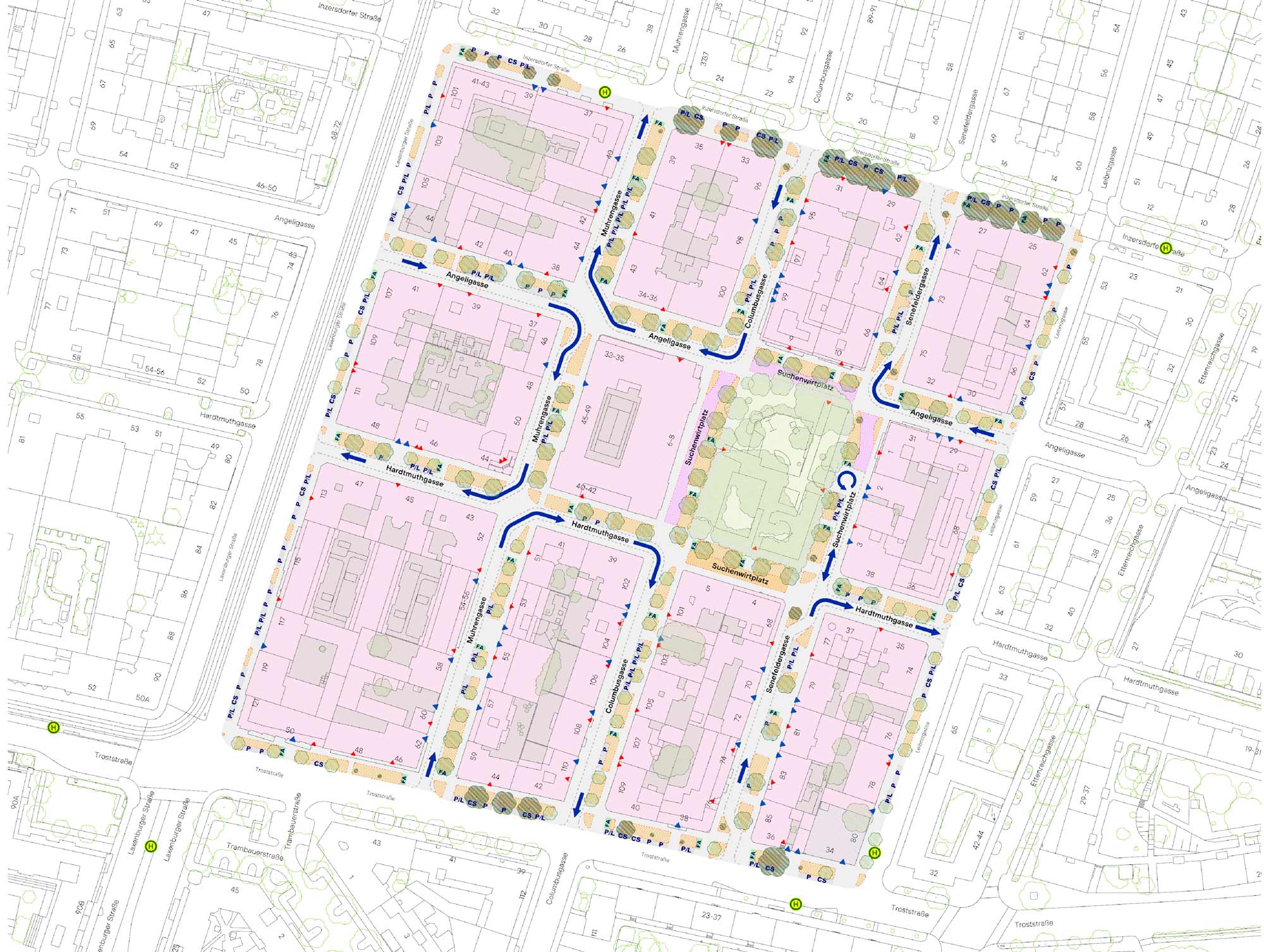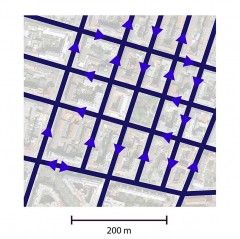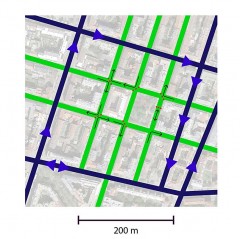To achieve a significant reduction in energy consumption in cities, and cut greenhouse gas emissions, new planning measures are needed – particularly in the transport and building sectors. The “superblock” concept is an innovative urban planning tool that was developed in Barcelona and is already being used there in some parts of the city.
The central principle is to realign traffic priorities to create more open space for pedestrians and cyclists, and to redesign public streets into liveable environments, as part of a city that is configured for strolling. Setting up superblocks offers great potential for energy savings by reducing car-traffic, and by redirecting private motorized traffic into sustainable forms of transport. Streets can be transformed into public spaces, creating a more spacious living environment. This makes a significant improvement in quality of life for the residents.
Applying the concept in Austria
An exploratory study entitled SUPERBE, conducted by TU Wien in collaboration with the AIT Austrian Institute of Technology and Florian Lorenz1, is investigating for the first time how the spatial organising principle of the superblock could be applied in Austrian cities, and what impact this would have on energy and traffic-related issues. Taking Vienna as an example, the study analysed how to identify possible areas for application, considering urban morphology. Three case study neighbourhoods were investigated, formulating urban planning and traffic management principles for each as a superblock. The study also analysed which areas could potentially be transformed into public space, and what savings could be anticipated with regard to energy consumption and greenhouse gas emissions.
Positive effects
The findings of the SUPERBE study show that superblock solutions are feasible in the Vienna context, and that many positive effects could be achieved. GIS spatial analysis was used to determine possible areas where the concept could be applied, resulting in a particular emphasis on districts characterised by the 19th century “Gründerzeit”. Detailed definitions of structural measures for the three selected superblock candidates, in Vienna’s 7th, 10thand 17th districts, show the resulting potential for the transformation of public spaces. The stock of trees could be increased by a factor of six compared to the present situation, and possible areas for green infrastructure (tree grates, plant basins etc.) by a factor of five.
The potential for energy savings through the immediate effects of shifts in means of transportation were illustrated using a mode choice model. This makes it possible to map and predict the means of transport people choose for certain journeys, based on attractiveness and distance. The results showed that up to 0.790 kilometres of car usage per person per day could be saved – which corresponds to 738 kg of CO2 or 2,644 kWh per day.
nachhaltigwirtschaften.at/en/sdz/projects/superbe.php
1 PROJECT PARTNERS: TU Wien, Research Unit of Transport Planning and Traffic Engineering (project management), AIT Austrian Institute of Technology GmbH, Florian Lorenz
This project is part of the “City of Tomorrow” programme run by the Federal Ministry for Climate Action, Environment, Energy, Mobility, Innovation and Technology.


